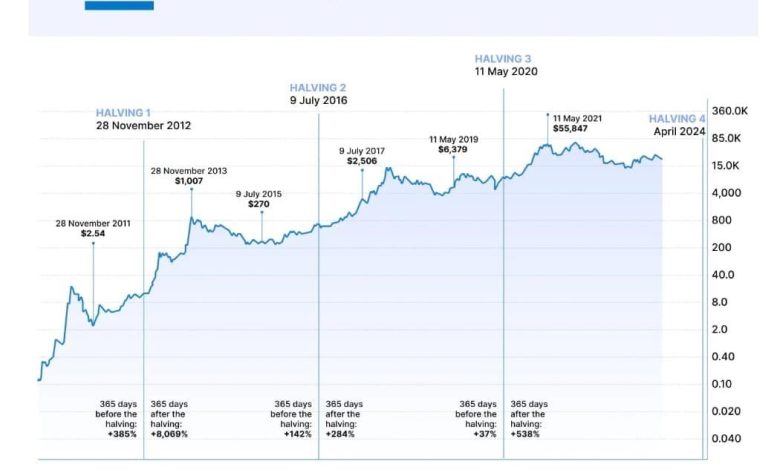The Impact of Regulatory Changes on Crypto Prices

- Understanding the relationship between regulatory changes and cryptocurrency prices
- Analyzing the effects of government regulations on the volatility of digital assets
- How regulatory uncertainty influences investor sentiment in the crypto market
- Exploring the correlation between legal frameworks and the value of cryptocurrencies
- The role of regulatory clarity in shaping the future of digital currency prices
- Case studies of past regulatory interventions and their impact on crypto prices
Understanding the relationship between regulatory changes and cryptocurrency prices
Understanding the relationship between regulatory changes and cryptocurrency prices is crucial for investors and traders in the digital asset market. Regulations imposed by governments and financial authorities can have a significant impact on the value of cryptocurrencies. When new regulations are introduced, it can create uncertainty and volatility in the market, leading to fluctuations in prices.
Regulatory changes can affect cryptocurrency prices in various ways. For example, stricter regulations may lead to decreased adoption of cryptocurrencies, resulting in a drop in demand and prices. On the other hand, regulations that provide clarity and legitimacy to the market can boost investor confidence and drive prices up.
It is essential for market participants to stay informed about regulatory developments and understand how they may influence cryptocurrency prices. By monitoring regulatory changes and their potential impact on the market, investors can make more informed decisions and mitigate risks associated with price volatility.
Analyzing the effects of government regulations on the volatility of digital assets
Government regulations play a crucial role in shaping the volatility of digital assets. When regulatory changes are announced, the market often reacts with uncertainty and fear, leading to increased price fluctuations. This is because investors are unsure of how the new regulations will impact the value and legality of cryptocurrencies.
One of the main effects of government regulations on the volatility of digital assets is the creation of a more stable market environment. By providing clear guidelines and rules for the use of cryptocurrencies, regulators can help reduce the level of uncertainty in the market. This can lead to a decrease in price volatility as investors feel more confident in the legitimacy of their investments.
On the other hand, strict regulations can also have a negative impact on the volatility of digital assets. If regulations are too restrictive or burdensome, it can stifle innovation and growth in the cryptocurrency space. This can lead to a decrease in trading volume and liquidity, which in turn can increase price volatility as the market becomes more susceptible to manipulation.
Overall, the effects of government regulations on the volatility of digital assets are complex and multifaceted. While regulations can help create a more stable market environment, they can also hinder growth and innovation in the cryptocurrency space. Finding the right balance between regulation and innovation is crucial to ensuring the long-term success and stability of digital assets.
How regulatory uncertainty influences investor sentiment in the crypto market
Regulatory uncertainty plays a significant role in shaping investor sentiment within the cryptocurrency market. The lack of clear guidelines and regulations from government authorities can lead to hesitancy and caution among investors, impacting their willingness to participate in the market. This uncertainty can create a sense of instability and risk, causing investors to be more hesitant to invest in cryptocurrencies.
Investors are constantly monitoring regulatory developments to gauge the potential impact on their investments. Any sudden changes in regulations or the introduction of new laws can lead to a sharp decline in investor confidence, resulting in sell-offs and price volatility in the market. This uncertainty can also deter new investors from entering the market, further exacerbating the situation.
Moreover, regulatory uncertainty can also affect the overall perception of cryptocurrencies as a legitimate asset class. The lack of clear regulations can raise concerns about the legality and security of investing in digital assets, leading to a negative perception among investors and the general public. This negative sentiment can further impact the prices of cryptocurrencies and hinder the growth of the market.
Exploring the correlation between legal frameworks and the value of cryptocurrencies
Exploring the relationship between legal frameworks and the value of cryptocurrencies is crucial in understanding the impact of regulatory changes on crypto prices. The legal environment in which cryptocurrencies operate can significantly influence their perceived value and market demand. When governments implement clear and favorable regulations, it can boost investor confidence and drive up the prices of cryptocurrencies. On the other hand, stringent regulations or bans can lead to a decrease in value as investors become wary of the risks involved.
Legal frameworks play a vital role in shaping the perception of cryptocurrencies as a legitimate asset class. Clarity in regulations can attract institutional investors who are looking for a secure and compliant investment environment. This influx of institutional capital can drive up demand for cryptocurrencies, leading to an increase in their prices. Conversely, ambiguous or restrictive regulations can deter institutional investors and hinder the growth of the crypto market.
Moreover, the legal status of cryptocurrencies can impact their adoption and mainstream acceptance. When governments recognize cryptocurrencies as legal tender or payment methods, it can lead to increased usage and demand, ultimately driving up prices. Conversely, regulatory crackdowns or bans can limit the use of cryptocurrencies, reducing their utility and value in the market.
The role of regulatory clarity in shaping the future of digital currency prices
Regulatory clarity plays a crucial role in influencing the future trajectory of digital currency prices. When regulatory frameworks are well-defined and transparent, investors gain confidence in the market, leading to increased demand for cryptocurrencies. This surge in demand typically results in a positive impact on prices, driving them higher.
Conversely, a lack of regulatory clarity can create uncertainty and fear among investors, causing them to hesitate or even pull out of the market. This uncertainty often leads to price volatility and downward pressure on digital currency prices. Without clear guidelines on how cryptocurrencies will be regulated, market participants may be reluctant to engage, resulting in a stagnant or declining market.
As governments around the world continue to develop and refine their regulatory approaches to digital currencies, the impact on prices remains a key consideration for investors. Clarity in regulations can provide a sense of stability and legitimacy to the market, attracting more participants and potentially driving prices higher. On the other hand, ambiguous or restrictive regulations can hinder market growth and innovation, leading to negative price movements.
Case studies of past regulatory interventions and their impact on crypto prices
Examining case studies of past regulatory interventions can provide valuable insights into how crypto prices have been affected in the past. Here are some examples:
- China’s ban on cryptocurrency exchanges: In September 2017, China announced a ban on all cryptocurrency exchanges operating within its borders. This news caused a significant drop in crypto prices as investors feared the impact of losing access to one of the largest markets in the world.
- SEC’s rejection of Bitcoin ETF: In August 2018, the U.S. Securities and Exchange Commission (SEC) rejected several proposals for a Bitcoin exchange-traded fund (ETF). This decision led to a temporary decline in crypto prices as investors were disappointed by the lack of a regulated investment vehicle for Bitcoin.
- South Korea’s regulatory crackdown: In early 2018, South Korea announced plans to regulate cryptocurrency exchanges more strictly, including banning anonymous trading accounts. This news caused a drop in crypto prices as investors worried about the impact of reduced trading volumes in one of the largest crypto markets in the world.
These case studies demonstrate that regulatory interventions can have a significant impact on crypto prices. Investors should stay informed about regulatory changes and be prepared for potential price fluctuations in the crypto market.



